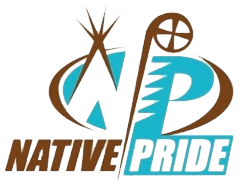Abstract
American Indian and Alaska Native (AI/AN) populations are rich in culture, traditions, kinship, and community. With 574 unique federally recognized Tribal sovereign nations in the United States, each has its distinct history, language, culture, and story. Prior to colonization, AI/AN children learned about traditional ways of life from their immediate and extended family members. Elders and families would talk with young people in their Native language and use words that helped their child feel loved and accepted. In these teachings, children also learned to respect others. Extended family members, such as aunts and uncles, were often responsible for teaching children about safety, self-care, and healthy relationships. Grandparents taught young people about life, how to speak in a good way, and how to conduct themselves; they were also responsible for passing down traditional knowledge and family kinship systems that supported holistic wellbeing .
Colonization, by way of Reservation systems, residential boarding schools, and foster care systems, disrupted traditional roles and teachings within AI/AN family kinship systems and resulted in cultural genocide. Colonial impacts and intergenerational traumas create conditions where AI/AN communities experience higher rates of suicide and lower life expectancy. Created in 1851, the United States government’s reservation system confined Native people to reservations, without access to traditional foods and hunting; as a result, many died and experienced severe malnutrition. Reservations face similar conditions today, characterized by limited economic opportunities, persistent poverty, and vast structural inequities that threaten the vitality and longevity of AI/AN people. The Native American residential boarding school movement, established in the late 1800s by Christian missionaries, aimed to “Kill the Indian and Save the Man.” Native children were forcibly removed from their homes and placed in residential boarding schools, as young as 4 years old. They were forbidden to speak their traditional language and could not wear traditional clothing; their long hair was cut short, and they were not allowed to use their Indian names. The physical, sexual, psychological, and emotional abuses that occurred in boarding schools linger in the hearts and minds of many Native families today, creating soul wounds and intergenerational traumas . Native foster care programs starting in the late 1800s removed Native children from their families and placed them in the care of non-Natives. Forced removal and foster care continue to negatively impact AI/AN family kinship systems, with Native children being 11 times more likely to be placed in foster care than a white child.
This study contributes new knowledge about the effectiveness of a culturally-centered curriculum in strengthening protective factors associated with suicide in AI/AN populations.
Journal
Frontiers in Public Health
Citation
Small C, Horn EB, Small G, Webb K, Bull EB, Small MC, Face RC, Pourier W, Montileaux H, Christiansen L, Bradley B, Trottier W, Trottier P, Geboe M, Beamon ER, Fatupaito B, Crawford-Martin B, Ikazoboh Y, Abeke K, Posey S, Milligan K and Kelley A (2025) Walking the good road of life: a longitudinal evaluation of American Indian youth suicide prevention training. Front. Public Health 13:1616464. doi: 10.3389/fpubh.2025.1616464


